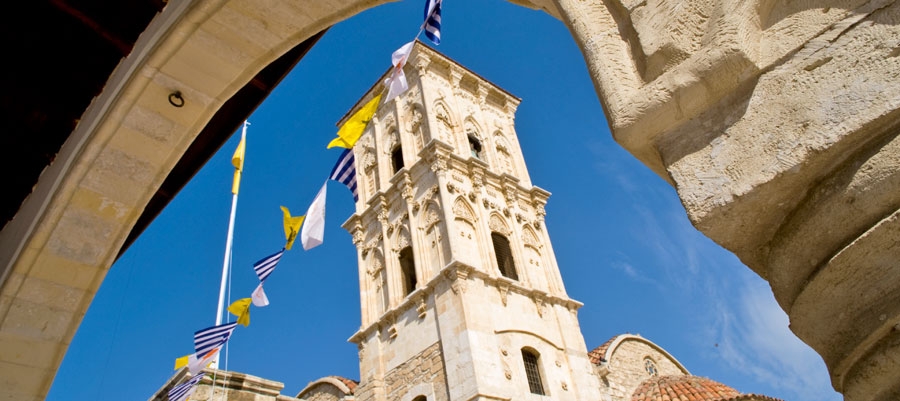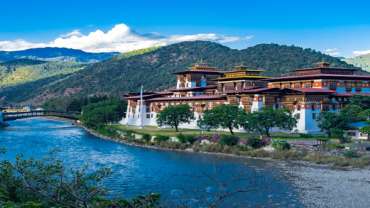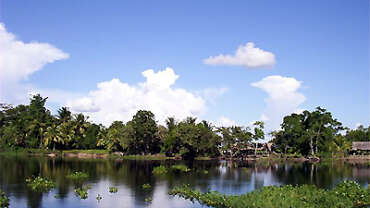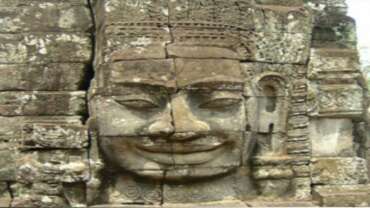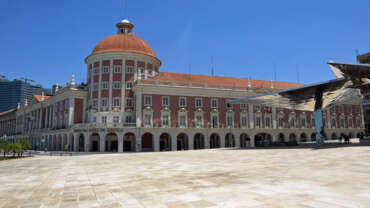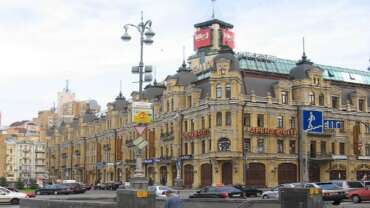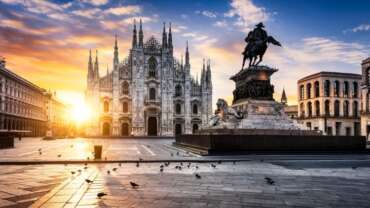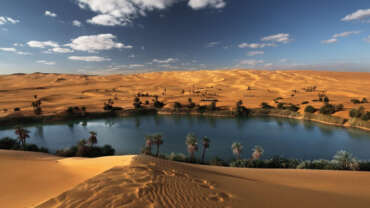Cyprus in your heart
Discover an island rich in history and culture, and full of wonderful experiences just waiting to be enjoyed. Whatever the season, Cyprus provides ample opportunity to experience something new, interesting and exciting, including activities, events, customs and places that are unique and special to the island.
Cyprus, officially called the Republic of Cyprus, is an island nation in the eastern Mediterranean Sea. It is the third largest and third most populous island in the Mediterranean, and is located south of Turkey; west of Syria; northwest of Lebanon, Israel and Palestine; north of Egypt; and southeast of Greece.
Culture & Religion of Cyprus
Cyprus is a small island with a long history and a rich culture that spans 10.000 years, making it one of the oldest civilisations in the Mediterranean – as evidenced by the many fascinating cultural sights, museums, monuments and galleries. Situated at the crossroads of three continents – Europe, Asia and Africa – the island’s unique geographic position has played an important part in its turbulent past since antiquity. Its Prehistoric Age inhabitants were joined 3,500 years ago by the Mycenaean Greeks, who introduced and established their civilisation, thus permanently instilling the island’s Greek roots. Many other cultures followed thereafter, including Phoenicians, Assyrians, Egyptians, Romans, Franks, Venetians, Ottomans and British, who all left behind visible remnants of their passage, and have thus created a mosaic of different cultures and periods.
As such, the island is an open-air museum of prehistoric settlements, classical Greek temples, Roman theatres and villas, Early Christian basilicas, Byzantine churches and monasteries, Crusader castles, Gothic cathedrals, Venetian fortifications, Moslem mosques, and British colonial-style buildings. The old ways of life, customs and traditions are still beautifully preserved in the rural villages, and interesting elements of the island are captured in the many museums and galleries. It is not surprising then that UNESCO includes a number of the island’s sights on its list of World Heritage Sites. Whilst the preservation of historical sites and riches is of the upmost priority for the island, these efforts are in stark contrast with the unfortunate reality that a large part of its cultural heritage remains under Turkish occupation since July 1974, and has been subjected to severe damage. But when visiting Cyprus, you will never have to look far to find a piece of its history and culture, whether you want to discover more about the traditions of the island, or immerse yourself in its captivating past.
Kykkos Monastery
Located in the mountainous region of Marathasa Valley, the Monastery of Kykkos is the wealthiest and most lavish on the island, and stands on a mountain peak, at an altitude of 1.318 metres.
Dedicated to Panagia (the Virgin Mary), the monastery possesses one of three icons attributed to Agios Loukas (Apostle Luke) the Evangelist. The icon – covered in silver gilt – is in a shrine made of tortoiseshell and mother-of-pearl that stands in front of the iconostasis.
According to tradition, Cypriot hermit Isaiah miraculously healed the daughter of Emperor Alexios I Komnenos (1081-1118 AD). As a reward, he asked for the icon, and though grieved at the prospect of losing the treasure, the emperor sent it to Cyprus, along with the funds to pay for the construction of a monastery where the sacred relic would be kept. The monastery burned down several times and nothing remains of the original structure.
Today, the monastery produces Zivania spirit and other alcoholic drinks, and holds religious fairs on September 8th (Birth of the Virgin) and August 15th (Dormition of the Virgin). There is also a museum on the grounds, whilst it is noteworthy for being the monastery that the first President of Cyprus, Archbishop Makarios III served at as a novice.
Local Archaeological Kourion Museum, Episkopi
Kourion Archaeological Museum is housed in a traditional building that was once the private residence of the late George McFadden, Assistant Director of the University of Pennsylvania, who led extensive archaeological research at the ancient city of Kourion and its environs from 1934 -1953.
The museum opened in 1969 and consists of two exhibition halls that showcase finds from the nearby archaeological sites, including red polished ware of the Early Bronze age, pottery and golden jewellery of the Mycenaean era, and a large number of offerings from the nearby Sanctuary of Apollon Hylates.
The skeletal remains of inhabitants of the city who lost their lives in the 4th century earthquakes constitute one of the most impressive exhibits of the museum, and were found in situ in a Roman house.
Cyprus Postal Museum
Located within the walled city of Lefkosia (Nicosia), the Cyprus Postal Museum is housed on the ground floor of an old two-storey mansion. It was founded in 1981 to exhibit the rich and diverse material of the island’s postal history, which started from the 15th century, when postal communications to-and-from Cyprus were organised for the first time during the Venetian period.
The halls of the museum exhibit postage stamps and rich philatelic material in chronological order, including material from the period of British Rule. In particular, the oldest series of Cypriot stamps with the portrait of Queen Victoria of England, which are overprinted with the word ‘Cyprus’, as well as the first dedicated Cypriot series of 1928 that depicts historic sites and figures related to the island’s long history.
Other exhibits include ‘first day of issue’ envelopes and stamps issued since the proclamation of the Republic of Cyprus in 1960 until today, and that showcase the island’s historical dates, great figures, culture, touristic sights, monuments and overall contribution to civilization. Methods of insuring post is also displayed, from sealing-wax to machinery, along with weighing scales and other philatelic books and magazines.
Cyprus Museum of Natural History
Located within the grounds of the Carlsberg Brewery, the museum is the largest natural history exhibition of its kind on the island and was founded by ‘The Photos Photiades Charity, Scientific and Cultural Foundation’. Amongst its 2.500 or so exhibits are: embalmed mammals, birds, fish, reptiles and insects, along with rocks, minerals, semi precious stones, shells and fossils.
Aphrodite Cultural Route
Follow in the footsteps of Aphrodite, the Ancient Greek Goddess of Love and Beauty, and protectress of Cyprus, and discover the archaeological sites dedicated to her ancient cult as you wander through layers of history, culture and mythology.
Cyprus has always been considered the ‘Island of Aphrodite’, and no other place in the world can boast of being the birthplace of the Goddess of Love and Beauty. In the 8th century BC, Homer mentions Aphrodite as ‘Kypris’ and ‘Golden Aphrodite’, whilst there are many myths connected to Aphrodite that possibly originated on the island, including those concerning Aphrodite and Hephaistos, Aphrodite and Ares, and Aphrodite and Adonis.
With a historically accurate programme of cultural routes – centred on the search for the traces that Aphrodite has left throughout the island – you will embark upon an enchanted journey through the sites of Palaipafos (Kouklia) in the Pafos (Paphos) region, the ancient city kingdom of Amathus in the Lemesos (Limassol) region, and Kition, in the Larnaka (Larnaca) region. Each is linked to other sites and museums, where artefacts related to the Goddess endure to this day. And upon the way, you will delight in learning all about her birth, mythology and character, as well as the rituals, plants and seashells connected with her cult.
Palaipafos – which is an UNESCO World Heritage Site – has the deepest links with the Goddess, as it is the area that played a central role in the genesis (birth) of Kyprida Aphrodite, and combines the most interesting sites of the route, including the main archaeological site of Palaipafos (Kouklia) and the Chalcolithic site of Lempa. There are also a number of related museums, nature sites and trails in the region.
The ancient city kingdom of Amathus – on the Bay of Lemesos – was probably founded by Greek Mycenaean settlers in the 12th to the 11th centuries BC, and was one of the most important kingdoms where Kyprida Aphrodite was celebrated. The ruins of the temple of Aphrodite can be seen at the main archaeological site of Amathus, whilst the District Museum of Lemesos complements the visit with in-depth information about the celebrated Goddess.
Larnaka and the Agia Napa area offer a combination of sites relating to Aphrodite. The main archaeological site is Kition – Kathari in Larnaka, where visitors can explore the links of the ancient city of Kition with the Goddess Kyprida Aphrodite, along with the area’s ties to the sea, culminating at the Kyprida Aphrodite Nature Trail at Cape Gkreko in Protaras.
Nowhere else will you find legend, history and romance so intricately intertwined, with each new discovery a beautiful reminder of the island’s unique and special bond with Aphrodite.
Antiquity Cultural Route
Discover the rich, historical wonders of an island that has seen many visitors through the ages, and bears the unique mark of each of them. As you follow a route of ancient ancestors, the insight and revelations they offer will transport you back to the adventures of bygone eras and heroic times. From the oldest settlements to grand architectural feats, a vast choice of archaeological sites can be explored, with so many paths leading back to the glorious past.
Begin your journey on the east coast with the ancient city of Kition in Larnaka (Larnaca). The site provides the first clear evidence that the Mycenaean Greeks arrived in Larnaka in the 13th century BC, and the Phoenicians in the 9th, and features temples dating back to these times.
Thereafter, head for new heights between Larnaka and Lemesos (Limassol), where the Neolithic settlement of Choirokoitia stands proudly on the hillside, distinctly marked out by cylindrical stone and mud dwellings that lay claim to the earliest permanent human housing on the island. The site is remarkably well-preserved and has been a listed UNESCO World Heritage Site since 1998.
Further down the southeast coast, the ancient Greco-Roman Kourion stands as one of the island’s top ancient highlights and was an important city-kingdom in antiquity. Its magnificent theatre was built in the 2nd century BC and extended in the 2nd century AD. Today, the theatre has been completely restored and is used for open-air musical and theatrical performances during the summer months, commanding breathtaking views of the surrounding patchwork land and sea.
As you follow the coastline towards Pafos (Paphos), history further comes to life, with the whole town listed as a UNESCO World Heritage Site, thanks to its world-famous archaeological sites that stretch out from Palaipafos (Kouklia) to the heart of Kato Pafos. Included are ancient villas of stunning mosaics and numerous sites associated to the cult of the Ancient Greek Goddess of Love and Beauty, Aphrodite, whom legend tells was born of sea foam in the region.
Eastern Cultural Route
Take a journey through the picturesque rural areas of the eastern part of the island, where traditional charm has been retained – and continues to defy the hands of time.
The route begins in the Ammochostos (Famagusta) area to visit the farming villages that are collectively known as ‘Kokkinochoria’. Comprised of the two Greek words for ‘red’ and ‘villages’, their name perfectly reveals that it is here that the abundance of the island’s potatoes, strawberries and watermelons are grown, in mineral-rich red soil that gives them a deliciously distinctive taste.
Heading further towards Larnaka (Larnaca), the Greek Orthodox monastery of Stavrovouni sits perched up high on a mountain peak, breathtakingly isolated and straight out of a classic painting. Savour the view before heading for the quaint mountainous village of Lefkara – famous for its handmade lace and filigree silver.
A stroll through its narrow winding lanes will take you past traditional terracotta-roofed houses, where the ladies of Lefkara sit outside, busily hand-embroidering intricate lace linens known as ‘Lefkaritika’. This skilled art has been practised exclusively in Lefkara since Venetian times (1489-1570 AD), when the village was a holiday resort for nobles, and the Venetian noblewomen taught the locals how to make the exquisite drawn-and-counted thread embroidery. The linens became an important trade for Lefkara and were world-renowned, and even the great painter Leonardo Da Vinci bought a large tablecloth for the altar of the Milan Cathedral when he visited the village.
In workshops across Lefkara, a second folk art is also still thriving – that of silverware, and the delicate craft of filigree jewellery known as ‘trifouri’. The cobweb effect of the beautiful handmade earrings, pendants and brooches is created by twisting fine silver wire into various designs. Enjoy a touch of traditional shopping for lace, silverware and other local products before stepping into the Folklore Museum for a journey back in time.
Finally, the adjacent village of Kato Drys (‘lower oak’ in Greek) is equally beguiling with its traditional architecture, beautiful views and interesting museums.
Copper Cultural Route
Cyprus Copper Itinerary – A tour Through the Heart of Cyprus
Uncover the island’s rich and significant historical ties with copper on a self-drive route that will scenically take you on a journey to the various copper mines and associated sites of the island. Along the way, you will discover a fascinating account of how Cyprus was the largest producer and exporter of the metal to the ancient world for many centuries, and its role in shaping the island’s history.
Pure copper – or its alloys – was a basic material needed for the development of large civilisations around the island, and Cyprus’ copper contributed to the technological progress of the entire Mediterranean world and beyond.
The drive starts from either Lemesos (Limassol) or Larnaka (Larnaca) towards the village of Sia (Sha), where just a few kilometres outside of the village you can admire the bright yellow and brown gossans (iron cap) that are typical of areas where there is copper mineralisation. Two open cast copper mines lie to the left – where the rock formations can be studied on a stroll of the site.
The next stop is the Mathiatis South Copper Mine, preceded by fragrant pine trees, which give way to the bright colours of the gossans that will guide you to the lake of the copper mine. A further drive in the Agia Varvara direction takes you up the road, where there is partial view of the North Mathiatis Open Cast Copper Mine.
From there the journey continues further north towards Agia Varvara village, where a turning near the olive oil factory will lead you onwards to a small valley where the Almyras Copper Mine and its workshops are located.
By continuing your drive through the villages of Kotsiatis, Marki and Tseri, the next site of interest is at Katydata village for a visit to the insightful Museum of Mining Heritage*.
The Skouriotissa Copper Mine and abandoned village are only a five-minute drive from Katydata. To the southwest of the copper mine is the UNFICYP San Martin camp, where you can visit the chapel of Panagia Skouriotissa: ‘Our Lady of the Skouriotissa Copper Mine’, which dates back to around 16th century, and houses some interesting icons. Northwest you will encounter abandoned houses that were built by the mining company CMC, and were used by the miners until 1974. A newly established monastery is situated a few hundred metres from some of the abandoned houses, and is also an interesting sight.
The Cyprus Copper route cannot fail to conjure to mind the rich and vivid past of ancient kingdoms, and the major part that copper played in their development, making it both an interesting and informative day out.
Health & Wellness in Cyprus
Combining the allure of a sunshine island with first-rate healthcare facilities and attractive fees, Cyprus is fast becoming a favoured option for medical tourism. And with the added bonus of recuperating in relaxing surroundings that are conducive to healing, it is no wonder that an increasing number of patients are choosing the island for their treatments. Alongside conventional medical treatments – that take place in the comfort of modern hospitals and clinics – the island is also home to luxury spa resorts and rural retreats, where comfort and nature harmoniously intertwine with health. Pampering, holistic therapies, beauty treatments and a general sense of wellbeing are all invoked, along with the feeling of escaping and focusing solely on oneself… without the stresses or distractions of daily life.
Whether you are undergoing a medical procedure or enjoying a spa indulgence, other aspects of the island also link with its suitability to healthy living. With the health attributes of the Mediterranean diet widely recognised, and the island’s abundance of fresh, local produce that bursts with flavour, eating well is a pleasure that comes easy in Cyprus. And with it comes the added bonus of enjoying your dining outdoors… with panoramic sea or mountain views. The fantastic year-round climate of dry summers and mild winters, also allows for a myriad of activities and pursuits, from walking and cycling to swimming and diving, whilst the areas of stunning natural beauty – from coast to forest – are soothing to all of the senses.
The finishing touch comes in more practical forms; the island’s enviable location makes it quickly accessible from a number of destinations; English and other languages are used extensively in the medical and tourism industries, and medical and wellness professionals and staff are all highly-trained and vastly experienced.
With health and wellness being such important gifts, you deserve to give yourself the best, and Cyprus provides the facilities, atmosphere and all the extra incentives to ensure you feel confident and relaxed that your health is in the most healing of hands.
A True Sense of Wellbeing
Aphrodite’s island has held the key to beauty and health for centuries, with the Goddess herself symbolising eternal youth and wellbeing. Today, Cyprus continues to induce and inspire an atmosphere of healthy living and a sense of total wellness through a combination of factors, from its Mediterranean charm and climate, to the extensive selection of premium spas and wellness centres.
Select your experience from being pampered in the luxury of world-class spas and spa resorts, to the grounding tranquillity of nature’s lush surroundings of greenery, blue seas and golden coasts. Whether you prefer the comfort of refinery or to immerse yourself in the island’s landscape, your total relaxation and rejuvenation is guaranteed.
With its alluring combination of year round sunshine, picture-perfect surroundings, and an environment conducive to healthy eating and leisure pursuits, the island has all the elements in place to invoke a true sense of harmony. This is further enhanced by impeccable accommodation, attentive and experienced staff, and a myriad of facilities designed for surrendering to.
Indoor and outdoor pools, freshwater and saltwater pools, whirlpools, saunas, steam rooms, hamams, fully equipped gyms, fitness studios, treatment rooms and beauty salons are just the start… there you will find an immense range of treatments and packages on offer for your revitalisation, including detoxifying algae and mud body wraps, aromatherapy, thalassotherapy, hot stone therapy, massages, shiatsu, reflexology, natural therapies and beauty treatments, along with so many other delectable treatments.
The linking services continue with counselling and fitness assessments to fit your own specific requirements, and personalised sessions to make you feel special, whilst the island is also home to its own holistic health secrets with an array of locally grown herbs and plants that are all put to good use.
So, for blissful relaxation, the chance to unwind and de-stress, or the opportunity to start or enhance your beauty or fitness regime, Cyprus has not only maintained Aphrodite’s secrets… but has built upon them in the most indulgently exquisite of ways.
Premium Medical Tourism
Combining healthcare with a relaxing holiday offers the benefits of top medical treatment at cost effective prices, coupled with the opportunity to recuperate on a beautiful sunshine island that is restorative to the mind and soul, as well as the body.
Cyprus is fast becoming a popular choice for medical tourism, thanks to a large array of modern private hospitals and clinics; excellent facilities with state-of-the-art equipment, and experienced and highly-qualified doctors and medical staff – largely trained in Europe or the USA. As such, it offers a one-stop service from treatment to recuperation.
From annual check-ups, cosmetic or reconstructive surgery, physiotherapy, kidney dialysis, cardiac care, dental and surgical procedures, to infertility treatment, the island offers attractively priced healthcare holidays, with added incentives and advantages.
The convenience factor encompasses the island’s enviable location that is easily accessible from many countries, whilst also allowing patients to book an operation upon arrival. Same day appointments are the norm, and you can see an astounding range of specialists either in a single medical centre, or within a short drive apart.
A considerable number of clinical laboratories offer a vast range of diagnostic tests both routine and specialised, whilst turnaround times for test results and doctor’s diagnosis are all speedy. Care is given by teams of highly trained medical and auxiliary staff who all speak English, whilst a large number of physicians also speak other languages, including Russian, German, French and Arabic.
As a small island, distances are short, placing everything at your fingertips, for both medical purposes and for the recuperation phase, where you can easily connect to a range of beautiful and serene surroundings, leisurely activities, gentle sports – and enjoy the healthy Mediterranean diet. And with sunshine for most of the year round, you don’t have to be confined to recovering indoors.
Gastronomy of Cyprus
The ritual of sharing good, fresh local cuisine is an important part of the island’s culture, and is intrinsically linked with every social event, from family gatherings and special occasions to religious festivals… each marked with its own distinct delicacies and recipes. From hearty meat dishes and specialty cheeses to unique desserts of carob and grape, the Cypriot cuisine is an exotic blend of Greek and Middle Eastern cultures, sprinkled with remnants of ancient civilisations such as indigenous Roman root vegetables or old Phoenician delicacies. And it is no secret that the ‘Mediterranean diet’ is considered to be of the healthiest, thanks to its abundance of heart-healthy olive oil, pulses, lean meat, local herbs and freshly grown fruits and vegetables. Add to this the favourable climate – that gives the fresh produce its intense flavour – and a celebration around every corner, complete with special treats, and you will find a big gastronomic adventure awaits on this tiny island!
Synonymous with Cypriot cuisine is the ‘meze’ – a variety of small dishes that combine to create a feast, and a good starting point to become acquainted with the local dishes, such as moreish dips, braised, stewed and clay-cooked meats; local, freshly caught fish; pulses and legumes in various sauces; specialty cheeses and delicatessen cuts, and more unusual bites, all authentically prepared.
And if you are visiting the island during a festival or holiday period, an amazing array of treats and dishes unique to the event appear to mark the occasion, often made by the women of the family, who gather together on specific days to share in the traditions passed down from generation to generation…
…and that remain today so that both locals and visitors alike can continue to enjoy, savour and share the mouth-watering, appetising, fragrant and abundant everyday experience that Cypriot cuisine!
Commandaria
Cyprus can proudly lay claim to the world’s oldest wine still in production – that of the delicious sweet dessert wine Commandaria.
Thought to date back to 800 BC, references to the consumption of a wine named ‘Cypriot Nama’ is believed to have been Commandaria before it was given its current name during the crusades in the 12th century. It was thought that the wine had therapeutic qualities and it was widely used as a tonic.
Richard the Lionheart celebrated his capture of Cyprus and his marriage to Berengaria in Lemesos (Limassol) with Commandaria, declaring it “the wine of kings and the king of wines”. In 1192 he sold the island to the Knights of St. John and the Knight Templars, who then sold it to Guy de Lusignan, but kept their headquarters at Kolossi. Commandaria was mainly produced in Kolossi – which was called ‘La Grande Commanderie’ – and it was here that the wine found its name. Commandaria was considered so good in ancient times that it even won the first recorded wine tasting competition the ‘Battle of the Wines’ in the 13th century, held by the French king Philip Augustus.
Sweetly similar to sherry, Commandaria has been made in the same manner for centuries, and in the same 14 winegrowing villages of the island. The indigenous grape varieties of Mavro (red) and Xynisteri (white) are picked late and dried in the sun to enhance their sugar content, giving the drink its distinctive taste. The dried grapes are then pressed, with the run-off collected and fermented in tanks or huge earthenware jars – much like those used in bygone times.
No visit to the island is complete without picking up a bottle to take home, not just as a drink, but also as a sweet piece of the island’s history!
Brandy Sour
The national cocktail of the island is undoubtedly the famous Brandy Sour, and although it is also enjoyed in other parts of the world, the Cypriot version is unique for the Cypriot brandy used in it and its interesting, royal origins!
The story goes that it was originally invented in the early fifties for King Farouk of Egypt at one of the island’s oldest hotels in the Troodos mountains. As the king loved Cypriot Brandy, the staff created a drink using brandy that looked like an innocent ice-tea, so that it wouldn’t be obvious he was enjoying alcohol!
The cocktail is made with Cypriot brandy – which is milder than Cognac or Armagnac – lemons (fresh or squash), Angostura bitters, soda water (or lemonade) and ice.
As well as enjoying it during your visit to the island, you can make the cocktail back home by buying a bottle – or two – of Cypriot brandy whilst you are here!
Golf in Cyprus

The allure of teeing off amidst stunning natural surroundings, along with the opportunity to enjoy golf all-year-round in a favourable Mediterranean climate are just two of the factors that are seeing Cyprus emerge as a leading golfing destination – and attracting both amateur and professional sportsmen to the island and its internationally-acclaimed courses. Located in some of the most picturesque areas of Cyprus, the select handful of courses have been applauded for the way they are integrated into the breathtaking natural landscape of dramatic ravines, cliffs and sea vistas – backdrops that have been carefully used to enhance the game on each course. The heritage of the courses is also pedigree, with some of the world’s most renowned golf course architects leaving their signature on the challenging courses they have designed on the island, from luxury golfing resorts to stand-alone greens.
Along with the opportunity to enjoy a game of golf in scenic tranquillity, the various courses also host annual tournaments on both a national and international level, as well as offering academies, clubhouses and other facilities.
With Cyprus offering a golfing destination full of potential and possibilities, there is no better place to ‘take a swing’.



